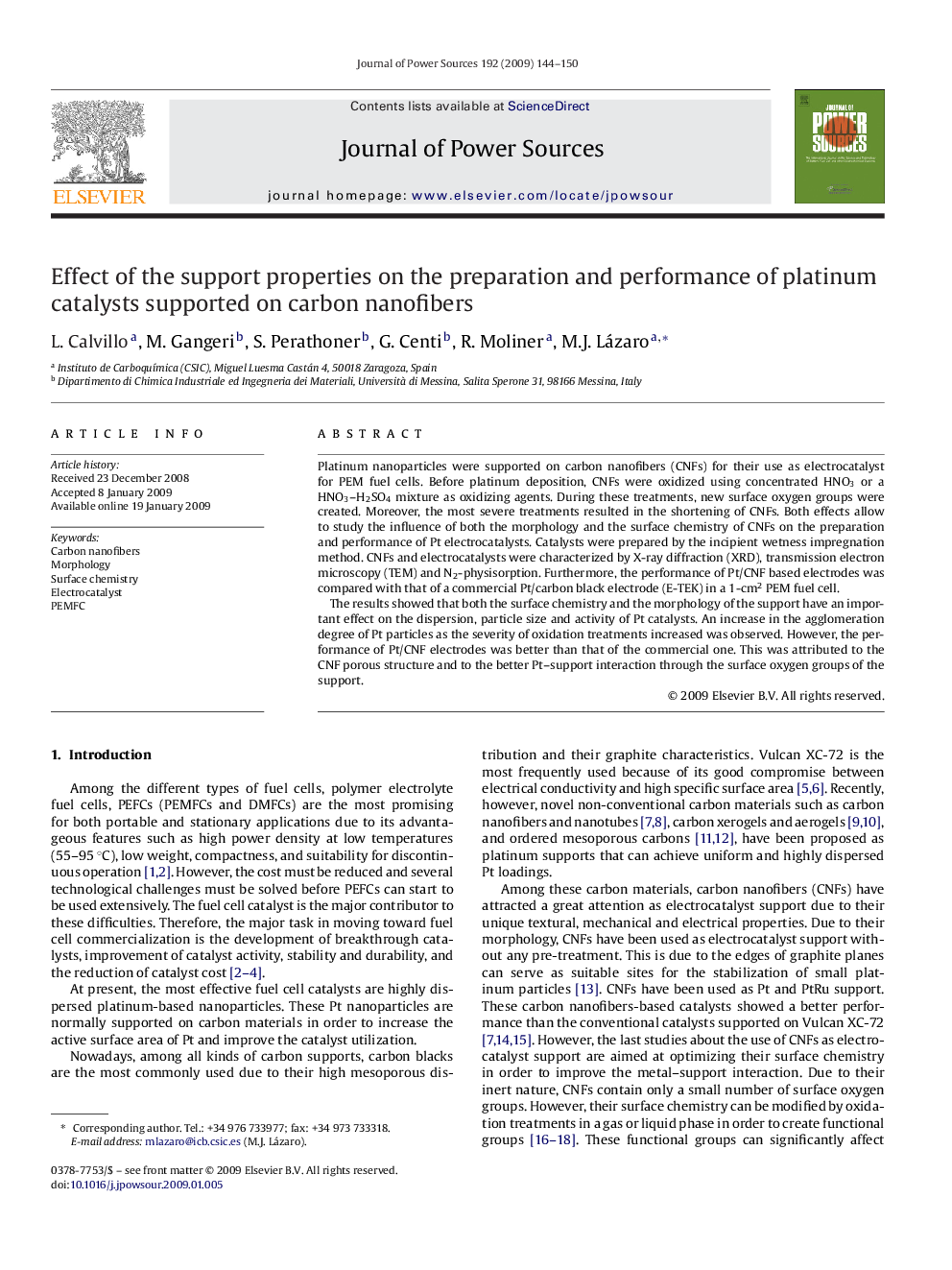| Article ID | Journal | Published Year | Pages | File Type |
|---|---|---|---|---|
| 1294210 | Journal of Power Sources | 2009 | 7 Pages |
Platinum nanoparticles were supported on carbon nanofibers (CNFs) for their use as electrocatalyst for PEM fuel cells. Before platinum deposition, CNFs were oxidized using concentrated HNO3 or a HNO3–H2SO4 mixture as oxidizing agents. During these treatments, new surface oxygen groups were created. Moreover, the most severe treatments resulted in the shortening of CNFs. Both effects allow to study the influence of both the morphology and the surface chemistry of CNFs on the preparation and performance of Pt electrocatalysts. Catalysts were prepared by the incipient wetness impregnation method. CNFs and electrocatalysts were characterized by X-ray diffraction (XRD), transmission electron microscopy (TEM) and N2-physisorption. Furthermore, the performance of Pt/CNF based electrodes was compared with that of a commercial Pt/carbon black electrode (E-TEK) in a 1-cm2 PEM fuel cell.The results showed that both the surface chemistry and the morphology of the support have an important effect on the dispersion, particle size and activity of Pt catalysts. An increase in the agglomeration degree of Pt particles as the severity of oxidation treatments increased was observed. However, the performance of Pt/CNF electrodes was better than that of the commercial one. This was attributed to the CNF porous structure and to the better Pt–support interaction through the surface oxygen groups of the support.
